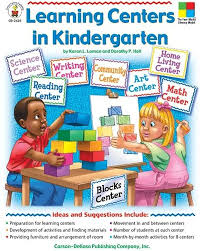
Exploring the Interactive World: Engaging Minds Through Dynamic Learning
The Power of Interactive Learning
Interactive learning is a dynamic approach that engages students actively in the learning process. It goes beyond traditional methods of teaching by involving learners in hands-on activities, simulations, and real-world scenarios.
One of the key benefits of interactive learning is its ability to enhance understanding and retention. When students participate in interactive activities, they are more likely to remember and apply what they have learned. This active involvement helps to reinforce concepts and improve long-term memory.
Furthermore, interactive learning promotes critical thinking and problem-solving skills. By encouraging students to explore, experiment, and collaborate, it fosters a deeper understanding of complex concepts and encourages creative thinking.
Another advantage of interactive learning is its ability to cater to different learning styles. Not all students learn best through traditional lectures or reading materials. Interactive approaches allow for personalised learning experiences that accommodate visual, auditory, kinesthetic, and other learning preferences.
Technology has played a significant role in advancing interactive learning. With the use of educational apps, simulations, virtual reality tools, and online platforms, educators can create immersive and engaging learning experiences that captivate students’ attention.
In conclusion, interactive learning offers a transformative approach to education that empowers students to take an active role in their own learning journey. By embracing interactive methods, educators can inspire curiosity, foster creativity, and equip students with the skills they need to succeed in an ever-changing world.
8 Effective Tips for Enhancing Interactivity in Your Presentations
- Engage your audience by asking questions
- Encourage participation through polls and surveys
- Use interactive visuals such as charts and graphs
- Incorporate interactive games or quizzes to make learning fun
- Provide opportunities for hands-on activities or demonstrations
- Allow for group discussions and collaboration
- Personalise the experience by addressing individuals by name
- Seek feedback to continuously improve interactivity
Engage your audience by asking questions
Engaging your audience by asking questions is a powerful technique to foster interaction and participation. By posing thought-provoking questions, you invite your audience to reflect, share their thoughts, and actively contribute to the conversation. This interactive approach not only keeps listeners attentive but also encourages critical thinking and dialogue, creating a dynamic and engaging learning environment.
Encourage participation through polls and surveys
Encouraging participation through polls and surveys is a valuable strategy to foster engagement and interaction in various settings, such as classrooms, meetings, or online platforms. By inviting individuals to share their opinions and insights through polls and surveys, you create a sense of inclusivity and empowerment. This interactive approach not only encourages active participation but also provides valuable feedback that can guide decision-making processes and enhance the overall learning or discussion experience.
Use interactive visuals such as charts and graphs
Utilising interactive visuals such as charts and graphs can significantly enhance the learning experience. These visual aids not only make information more digestible but also allow for active engagement with the content. By interacting with charts and graphs, learners can explore data, draw connections, and gain a deeper understanding of complex concepts. This hands-on approach promotes critical thinking skills and encourages students to analyse information in a meaningful way. Overall, incorporating interactive visuals in educational settings can transform passive learning into an interactive and stimulating experience that fosters comprehension and retention.
Incorporate interactive games or quizzes to make learning fun
Incorporating interactive games or quizzes into the learning process can transform educational experiences into engaging and enjoyable activities. By introducing elements of play and competition, students are motivated to participate actively and retain information more effectively. These interactive tools not only make learning fun but also provide immediate feedback, allowing students to track their progress and reinforce their understanding of the material.
Provide opportunities for hands-on activities or demonstrations
Offering opportunities for hands-on activities or demonstrations is a powerful way to enhance interactive learning experiences. By engaging students in practical tasks and real-world applications, educators can bring abstract concepts to life and deepen understanding. Hands-on activities encourage active participation, critical thinking, and problem-solving skills, allowing students to learn through direct experience. This approach not only makes learning more engaging and memorable but also empowers students to apply their knowledge in practical situations, fostering a deeper appreciation for the subject matter.
Allow for group discussions and collaboration
Encouraging group discussions and collaboration is a powerful way to enhance interactive learning experiences. By working together, students can share ideas, perspectives, and insights, fostering a deeper understanding of the subject matter. Group discussions promote critical thinking, communication skills, and teamwork, all of which are essential for success in both academic and real-world settings. Through collaboration, students learn to respect diverse viewpoints, solve problems collectively, and build strong relationships with their peers. Overall, incorporating group discussions into interactive learning activities creates a rich and engaging environment where students can learn from each other and grow both academically and socially.
Personalise the experience by addressing individuals by name
Personalising the interactive experience by addressing individuals by name adds a personal touch that helps to create a sense of connection and engagement. When learners hear their names being used, it can make them feel valued and acknowledged, fostering a more positive and attentive learning environment. This simple yet effective technique can enhance the overall learning experience, making it more memorable and impactful for each individual involved.
Seek feedback to continuously improve interactivity
Seeking feedback is a valuable strategy to enhance interactivity in various settings. By actively listening to the input and suggestions of participants, whether in a classroom, workshop, or online platform, you can gain valuable insights into what engages them and what could be improved. Feedback allows you to adapt and refine interactive elements to better meet the needs and preferences of your audience, ultimately leading to a more dynamic and effective learning or engagement experience.



